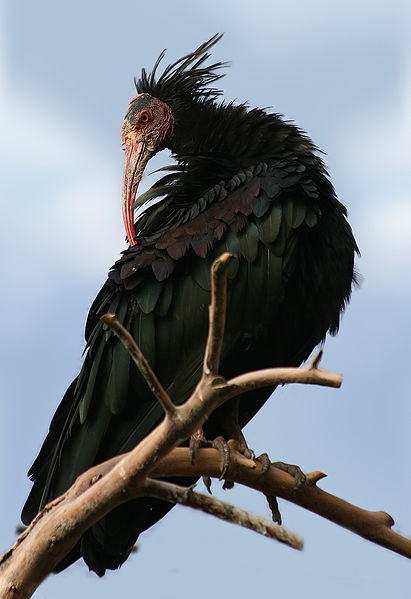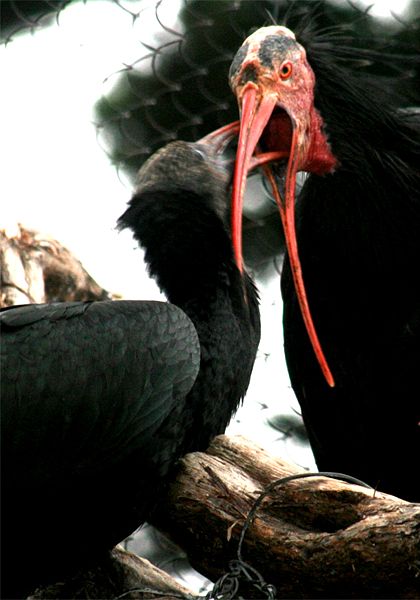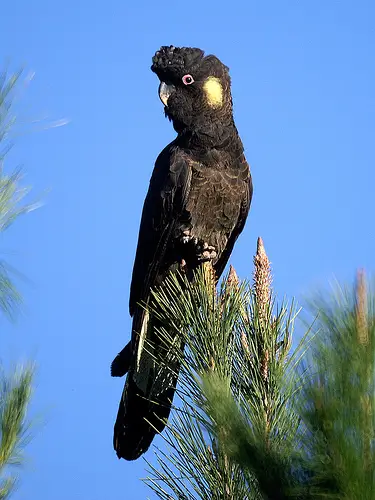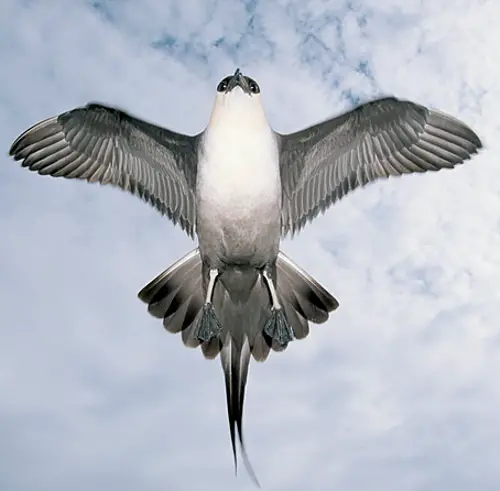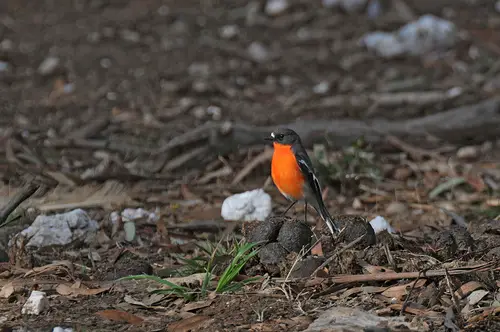Northern Bald Ibis
Also known as the Waldrapp or the Hermit Ibis, the Northern Bald Ibisis a migratory bird that is currently on the Critically Endangered list. This bird is found in semi-desert, barren,. And rocky habitats that are close to running water.
The Northern Bald Ibis is about 70 to 80 cm long. It is an ibis with glossy black plumage. Unlike the rest of its family, it does not wade. It does not have feathers on its red face and head. Its red bill is long and curved. It breeds in colonies, in mountain or coastal cliff ledges. The Northern Bald Ibis will normally lay between 2 to 3 eggs at a time. They eat lizards, insects, and other small animals.
Sadly, these critically endangered species were once quite widespread across southern Europe, the Middle East, and northern Africa. Records indicate that it bred along the Rhone and Danube Rivers, as well as the mountains of Spain, Italy, Germany Switzerland, and Austria. Its fossil records actually date back to 1.8 million years ago. It disappeared 300 years ago from Europe. It is thought that there are about 500 wild Northern Bald Ibises in southern Morocco at Souss-Massa National Park, but less than 10 in Syria where it was recently rediscovered in 2002. To combat these extremely low numbers, reintroduction programs have been introduced internationally. At present, there are semi-wild breeding colonies in Turkey, Austria, Spain, and northern Morocco. The reason for the Northern Bald Ibis’ decline is unclear, but it is thought that it is due to loss of foraging habitat, pesticides, and hunting are major factors.
The Northern Bald Ibis has appeared in many legends. According to a local legend in the Birecik, the Northern Bald Ibis was one of the first birds that Noah released from the Ark. It was a symbol of fertility, and its religious sentiment in Turkey helped the colonies to survive.
In Ancient Egypt, the ibis was revered as a holy bird and a symbol of brilliance. It was regarded as a reincarnation of Thoth who was the scribe of the Gods.
The Northern Bald Ibis has appeared on many postage stamps. These include Austria, Jersey, Yemen, Turkey, Syria, Sudan, Morocco, and Algeria. This is because they are either migration or breeding grounds of this bird, or they have a small captive population.
